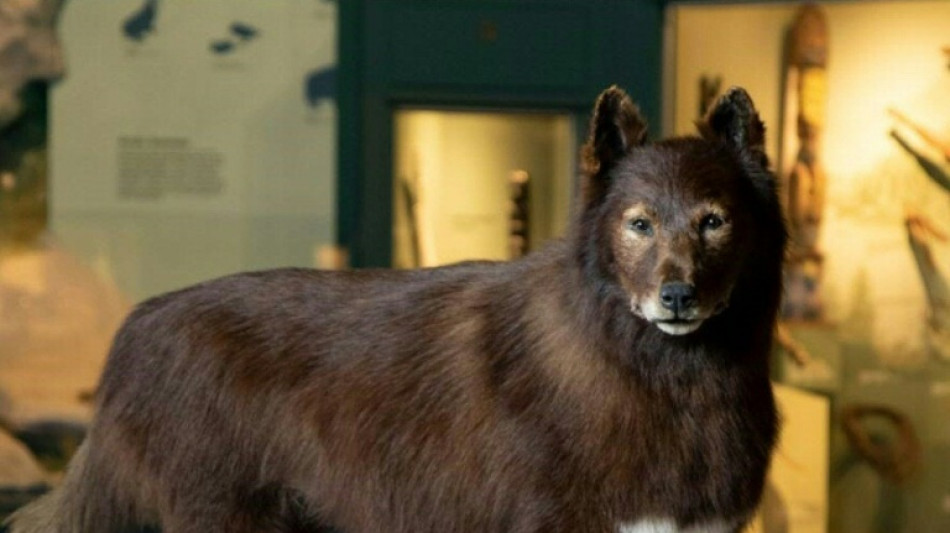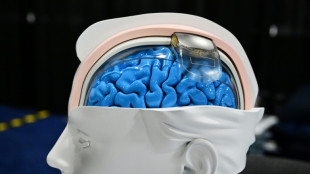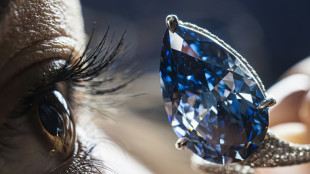
-
 India bank on formidable home Test record in South Africa series
India bank on formidable home Test record in South Africa series
-
Australia's Hazlewood in injury scare ahead of first Ashes Test

-
 No ordinary Joe: Stokes backs Root to fire in Australia
No ordinary Joe: Stokes backs Root to fire in Australia
-
Humans can no longer tell AI music from the real thing: survey

-
 House vote likely Wednesday on ending US government shutdown
House vote likely Wednesday on ending US government shutdown
-
Sixers edge Celtics while Thunder reach NBA-best 11-1

-
 Cambodia's Prince Group denies link to scams after asset seizures
Cambodia's Prince Group denies link to scams after asset seizures
-
Stokes bats away criticism of England's Ashes preparations

-
 Russia loses legal bid to build embassy next to Australian parliament
Russia loses legal bid to build embassy next to Australian parliament
-
Ethiopia's invasive prosopis tree chokes livelihoods and land

-
 'We're already living in science fiction': The neurotech revolution
'We're already living in science fiction': The neurotech revolution
-
Ousted Gabon leader's wife and son sentenced to 20 years for graft

-
 Asian markets up on hopes over shutdown deal, rate cut
Asian markets up on hopes over shutdown deal, rate cut
-
Bangladesh's liquor industry a surprising success

-
 Nepal's war victims watch political changes with fragile hope
Nepal's war victims watch political changes with fragile hope
-
France aim to secure World Cup place as Paris marks attacks anniversary

-
 Russia jails teen musician over anti-war street songs for third time
Russia jails teen musician over anti-war street songs for third time
-
Demand for air con set to triple by 2050, warns UN

-
 Trump claims 'very big victory' as shutdown vote nears
Trump claims 'very big victory' as shutdown vote nears
-
Indigenous protesters clash with security at COP30 summit in Brazil

-
 France warns over Caribbean 'instability' as G7 talks open
France warns over Caribbean 'instability' as G7 talks open
-
Brazil tries to avoid climate bust up at COP30 summit

-
 Ethiopia set to host UN's 2027 climate summit, 2026 undecided
Ethiopia set to host UN's 2027 climate summit, 2026 undecided
-
Close Zelensky ally accused of orchestrating major graft scheme

-
 'Trump is temporary': California governor Newsom seizes COP30 spotlight
'Trump is temporary': California governor Newsom seizes COP30 spotlight
-
US stocks end mostly higher despite drop in Nvidia

-
 Arrival of US aircraft carrier fuels Venezuelan fears of attack
Arrival of US aircraft carrier fuels Venezuelan fears of attack
-
Iraqi voters turn out in numbers as region watches on

-
 Pakistan upstage Sri Lanka in first ODI as Agha and Rauf shine
Pakistan upstage Sri Lanka in first ODI as Agha and Rauf shine
-
Macron warns any planned West Bank annexation a 'red line'

-
 BBC must fight, says outgoing chief as Trump threatens to sue
BBC must fight, says outgoing chief as Trump threatens to sue
-
UN aid chief hails talks with Sudan army leader

-
 Mellon Blue diamond sells for $25.6 million
Mellon Blue diamond sells for $25.6 million
-
Google unveils $6.4 bn investment in Germany

-
 US aircraft carrier in Latin America fuels Venezuelan fears of attack
US aircraft carrier in Latin America fuels Venezuelan fears of attack
-
For many Syrians, Sharaa's US visit marks new beginning

-
 Monumental art displayed in shade of Egypt's pyramids
Monumental art displayed in shade of Egypt's pyramids
-
Stocks mixed as tech titans struggle

-
 California governor Newsom slams Trump at COP30
California governor Newsom slams Trump at COP30
-
Alcaraz fights back to beat Fritz at ATP Finals

-
 Russia offers US nuclear talks in bid to ease tensions
Russia offers US nuclear talks in bid to ease tensions
-
Turkey seeks more than 2,000 years behind bars for Erdogan rival

-
 UK court jails Chinese bitcoin fraudster for over 11 years
UK court jails Chinese bitcoin fraudster for over 11 years
-
Fanfare as Guinea launches enormous Simandou iron ore mine

-
 Iraqis vote in general election at crucial regional moment
Iraqis vote in general election at crucial regional moment
-
Shock follows carnage after suicide bombing in Islamabad

-
 Ford returns to pull England strings against All Blacks
Ford returns to pull England strings against All Blacks
-
Stocks mixed as end to US shutdown appears closer

-
 BBC must 'fight' for its journalism, outgoing chief says amid Trump lawsuit threat
BBC must 'fight' for its journalism, outgoing chief says amid Trump lawsuit threat
-
Atalanta turn to Palladino after Juric sacking


DNA study of famed US sled dog shows what made him so tough
New York's Central Park has a statue dedicated to him, and there's even been a movie about him: a sled dog named Balto. Now he is the focus of a DNA study, 90 years after he died, to see what made the pooch so famously tough.
In 1925, this Siberian husky was part of an expedition in Alaska called the serum run, the goal of which was to bring life-saving medicine to young people in the remote town of Nome that were threatened by diphtheria.
The mission in horrendous blizzards conditions involved a series of sled dog teams transporting the anti-toxin relay-style from the city of Anchorage. Balto led the dog team that covered the last stretch of the grueling journey.
The dog died in 1933, and its mounted body has been on display at the Cleveland Museum of Natural History ever since.
"Balto’s fame and the fact that he was taxidermied gave us this cool opportunity 100 years later to see what that population of sled dogs would have looked like genetically and to compare him to modern dogs," said Katherine Moon, a postdoctoral researcher at the University of California, Santa Cruz and the main author of the study.
It was published Thursday in the journal Science.
Her team took skin samples from the dog's belly and reconstructed its genome -- the complete set of genes in an organism.
They compared this genetic material with that of 680 contemporary dogs from 135 breeds.
Contrary to a legend that held that Balto was half wolf -- as suggested in an animated Universal Pictures film that came out in 1995 -- this analysis found no evidence he had wolf blood.
It turned out Balto shared ancestors with modern day Siberian Huskies and the sled dogs of Alaska and Greenland.
Zoom's team also compared Balto's genes with the genomes of 240 other species of mammals as part of an international effort called the Zoonomia Project.
This allowed researchers to determine which DNA fragments were common across all those species and have not therefore changed over the course of millions of years of evolution.
This stability suggests that these stretches of DNA are associated with important functions in the animal, and that mutations there could be dangerous.
The bottom line from the research was that Balto had fewer potentially dangerous mutations than modern breeds of dogs did, suggesting he was healthier.
"Balto had variants in genes related to things like weight, coordination, joint formation and skin thickness, which you would expect for a dog bred to run in that environment," Moon wrote in a statement.
P.Mathewson--AMWN

